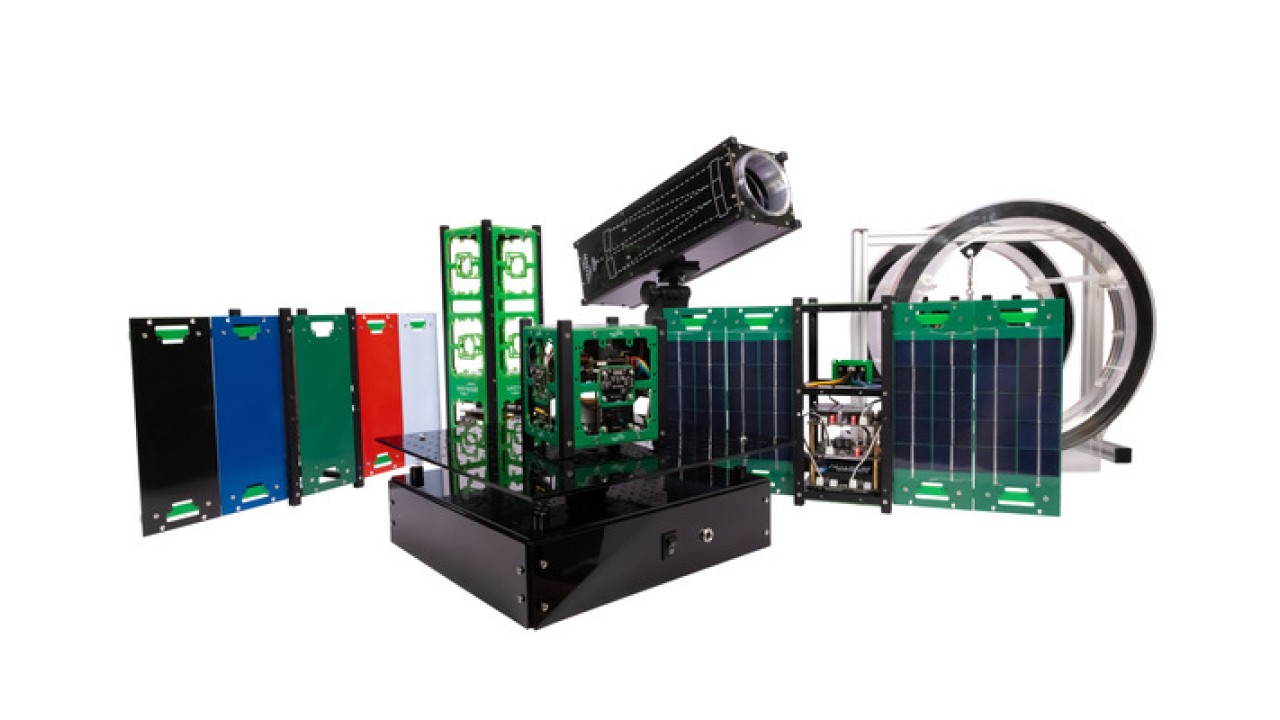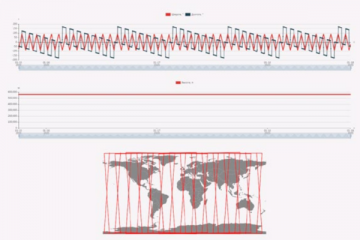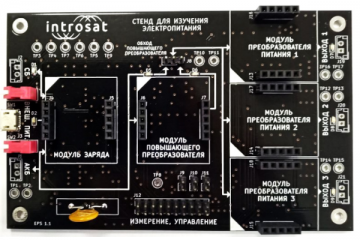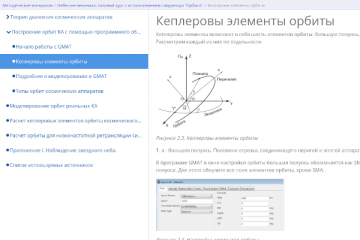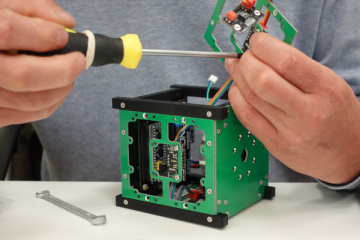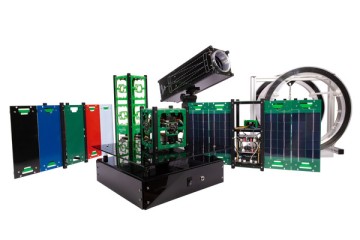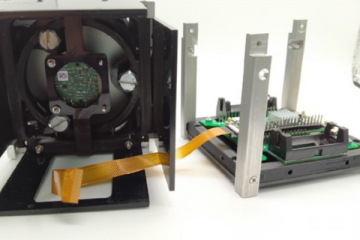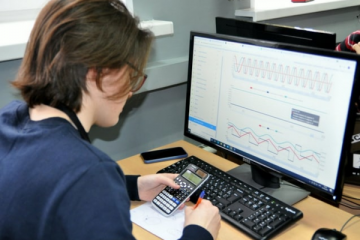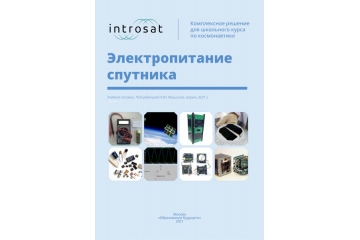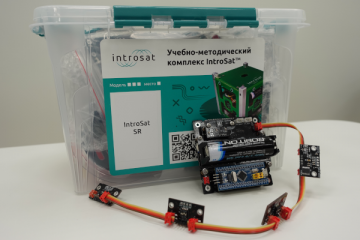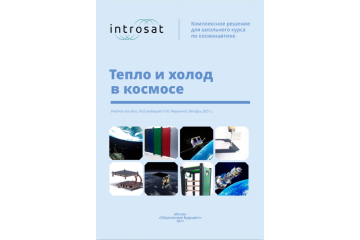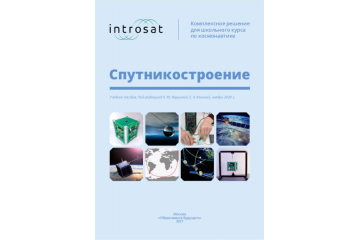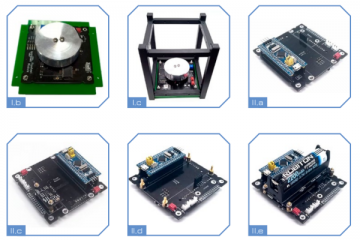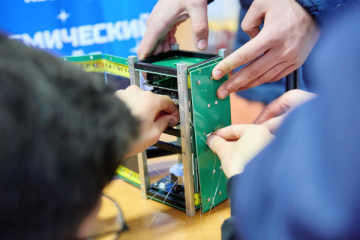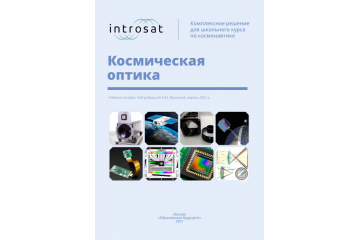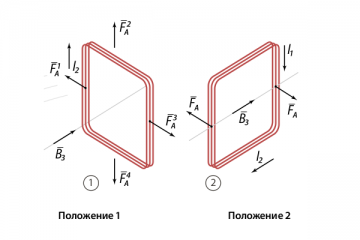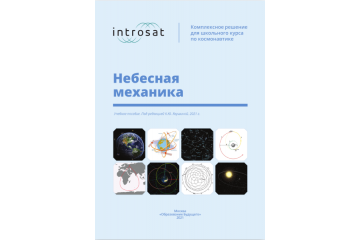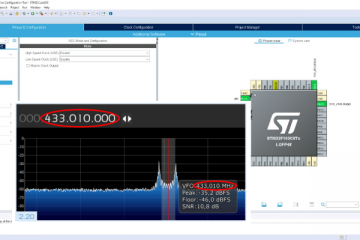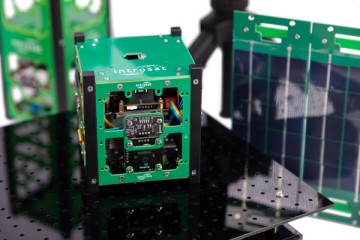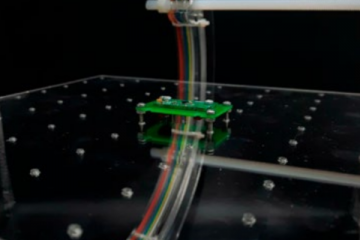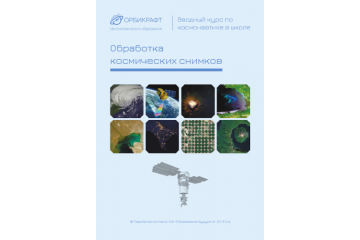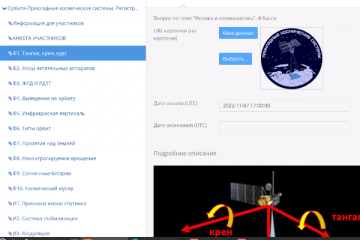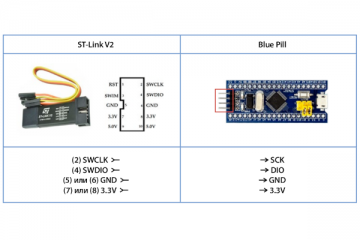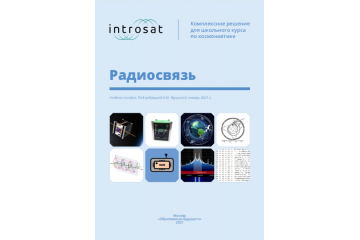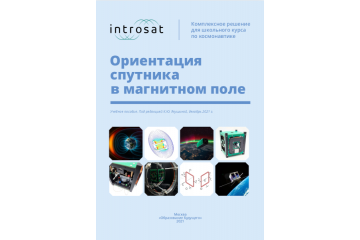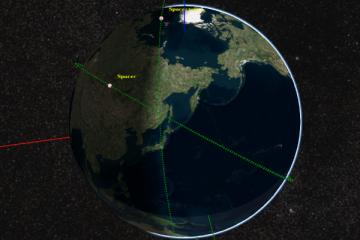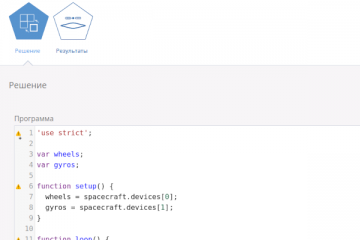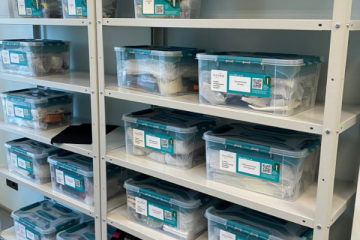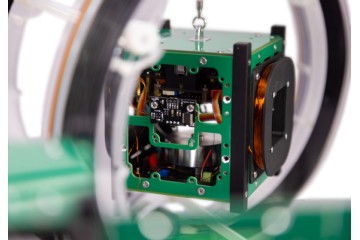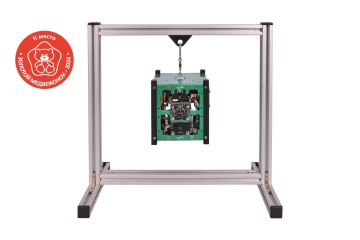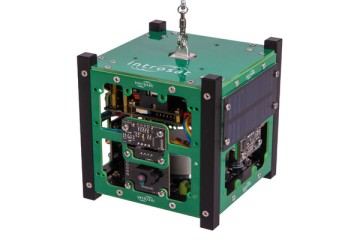A complete set of IntroSat space engineering laboratory for a group of 15 students.
Composition of the kit:
| Information for tenders | |
| OKPD | 32.99.53.130 |
| KTRU | 32.99.53.130-00000043 |
| What is in box | |
| Groups of themes in education materials | Satellite engineering, Radio communication, Celestial mechanics, Magnetism, Mechanical structures, Satellite power supply, Heat and cold in space, Space optics, Space imagery processing |
| Format of education materials | Online |
| Hardware and materials | Introsat educational kit of satellite. Basic set. - 5 pcs, Set for group workshops on the group of topics "Satellite Engineering" (multimeter, crimper, battery charger) - 2 pcs, Introsat Constructor. Extension "Mechanical structures". - 3 pieces, Constructor Introsat. Set for assembling a pressure chamber. - 2 pieces, Constructor Introsat. Satellite Power Extension. - 3 pieces, Constructor Introsat. Expansion "Heat and cold in space". - 3 pieces, Constructor Introsat. Extension "Magnetism". - 3 pieces, Constructor Introsat. Extension "Space optics". - 3 pcs, Introsat. A set of additional consumables for the laboratory. - 1 piece, Service "Orbita.Challenge". Full license for 3 years - 1 pc. Electronic teaching aids by topic groups "Celestial mechanics", "Satellite construction", "Radio communication", "Mechanical structures", "Satellite power supply", "Heat and cold in space", "Magnetism", "Space optics", "Space image processing". |
| Box type | Plastic containers suitable for storing kits in the laboratory |
| Electronic modules features | |
| Space unit type | CubeSat format microsatellites, test benches |
| Central control unit type | Arduino-compatible microcontroller of the STM32 family (BluePill or compatible) |
| Voltage | 3.3V, 5V, 9V, adjustable |
| Power connectors | Arduino Shield (PBS), PLS, JST |
| Battery type | 18650 |
| Data interfaces | I2C (main), GPIO, PWM, UART, SPI, CAN |
| Data connectors | MicroMatch 4F, PLS, Arduino Shield (PBS), MicroSD |
| Wireless interfaces | Bluetooth, VHF Radio |
| Software Features | |
| Software access form | Online service access |
| Access duration | 36 months (for online support service) |
| Number of end users | 100 |
| Software Features List | Space mission design function, including determination of the number, structures, orbits and control programs of spacecraft, including determination of coordinates and parameters of ground stations, including calculation of mission results in the numerical simulation system, including the ability to display graphs of changes in the objective indicators of the mission after its calculation, including the ability to display the position of vehicles during the mission in 2D and 3D format; The function of creating courses of problems and competitions for students, including creating and modifying space mission design tasks with customizable and manual evaluation of the mission simulation result including creation and modification of tests with answers in the form of a choice of value, number, string with customizable and manual evaluation of the result including creating and modifying tasks for the development of program code with customizable and manual evaluation of the result Catalog of materials for the teacher including sample tasks for the development of courses and competitions, number, pcs including availability of methodological materials in electronic form for conducting classes in the field of space engineering Manage student access Formation of teams of students, accounting for individual and team results |
| Number of concurrent events | 10 |
| Available disk space | 2000 MB |
| Education expirience | |
| Themes of lessons | Overview of modern satellite engineering, fundamentals of orbital mechanics, microsatellite assembly, programming of sensors and actuators, simple algorithms for stabilizing and orienting a spacecraft, setting up and programming a radio channel, capturing and transmitting an image, space flight factors, designing with load calculations, vibration tests of spacecraft , load-bearing elements of spacecraft structures, deployment of solar batteries, Testing of space technology for operation in conditions of ultra-low pressure, Features of the conservation and transfer of heat in the space environment, methods of thermal control of spacecraft, development of a thermal management system based on heat pipes, Electricity, Beginnings of circuitry, Voltage converters, Power supply system assembly, Solar panels and their connection schemes, Spacecraft energy balance, Fundamentals of optics and remote sensing of the Earth, spectral analysis, refractors and reflectors, calculation and assembly of the Kepler telescope, observations, mirror-lens schemes, the Maksutov-Cassegrain scheme, optical elements, image quality, types of aberrations, collimators, alignment, Raspberry Pi operation, Cameras and specialized software for working with images , Space images and methods of working with them, Types of surveys for the used parts of the spectrum, computer processing of images, Working with optical, thermal, radar images, Fundamentals of celestial mechanics, elements of orbits, popular applied orbits of satellite systems, Stabilization and orientation of a spacecraft in orbit, Correction of the orbit using jet engines (including, but not only the Hohmann transition), Planning the scheme of information exchange with spacecraft, Noise-correcting coding, Selection of an orbit for a spacecraft for given purposes (flying over a point, performing the necessary communication sessions, etc. etc.), Determining the orbit from known communication data, Designing a constellation of remote sensing devices of various types with sweeping out the area of interest, Designing the mission taking into account the task of maintaining the energy balance (control of orientation, orbital movement, black and white conditions). |
| Engineering skills | Programming of microcontrollers, Radio engineering, Electrical engineering and energy balance calculations, Circuitry and design of electronic boards, Calculation of energy balance, Design, 3D modeling, Strength calculations, Design of SOTR and calculations of temperature conditions, Calculations of optical systems, Image processing, Orientation and stabilization algorithms, Noise-immune coding, Calculations of orbital mechanics. |
| Age of students | 14 years and older (certain tasks can be adapted for younger children) |
| Max. amount of students working with 1 kit | 15-20 |
| Learning hours | From 216 |
| Competition preparation | Russian National Technological Olympiad (profile "Satellite systems"), program "Planet Watch" (direction "Applied space systems"). |
IntroSat Lab. Standart
- Brand: Education of the Future
- Product Code:Introsat Lab
- Availability:Order in 1 month
-
₽ 4,420,300.00
Related Products
IntroSat Basic Educational Kit
Laboratory basic set IntroSat™, topic groups "Satellite Engineering" and "Radio Communications >"..
₽ 209,900.00
Orbita.Challenge service 3-year full standart access
Access to the service for the design and numerical simulation of space missions “Orbita.Challenge” i..
₽ 499,900.00
IntroSat. Set "LAB Nano" ("Satellite construction. Basic Course") for 5 teams
Set on the basics of satellite engineering for a group of 5 teams (15 students). Composition of the..
₽ 1,049,500.00
IntroSat Basic Educational Kit (Technology Lessons)
Laboratory basic set IntroSat™, topic groups "Satellite Engineering" and "Radio Communications >"..
₽ 279,900.00
IntroSat Lab. Double hardware pack for Standart laboratory type
Includes a complete set of equipment for the Introsat Space Engineering Laboratory for a group of 15..
₽ 3,370,740.00
IntroSat Lab. Full
A complete set of Introsat space engineering laboratory for a group of 15 students. ..
₽ 6,746,890.00
Tags: Set, Satellites, IntroSat
